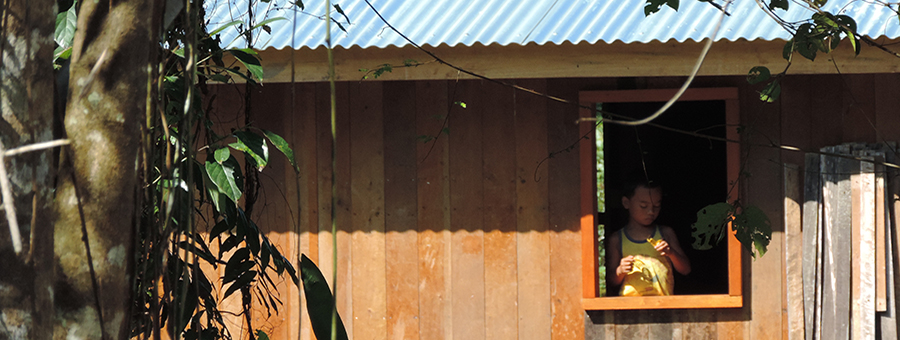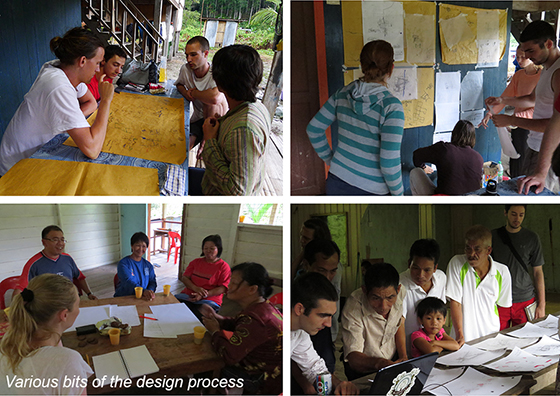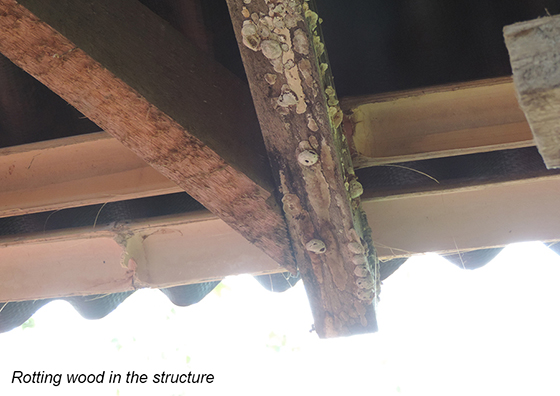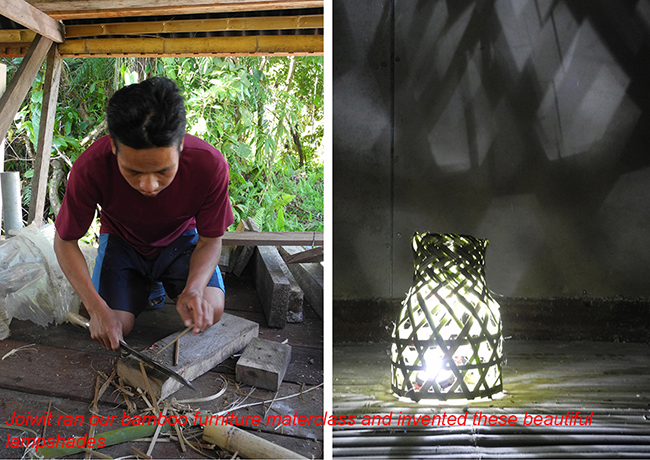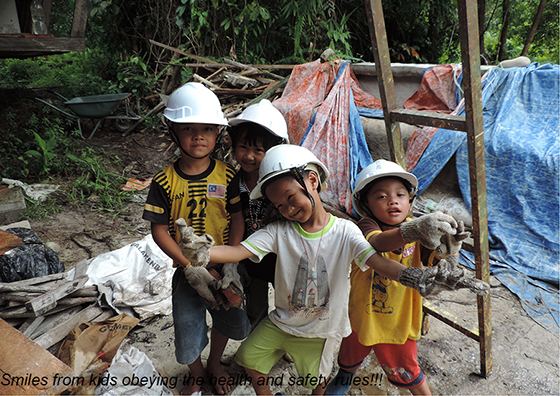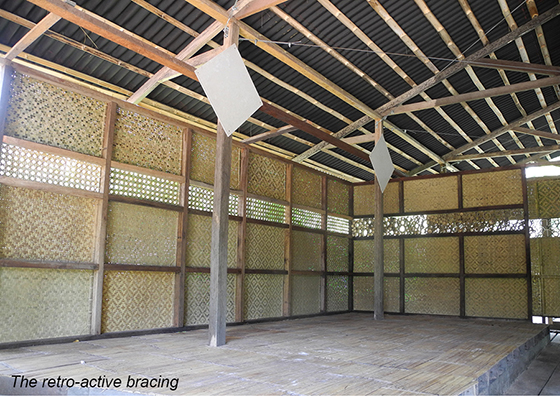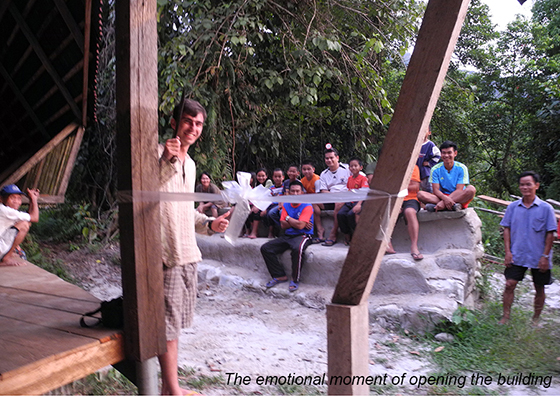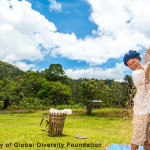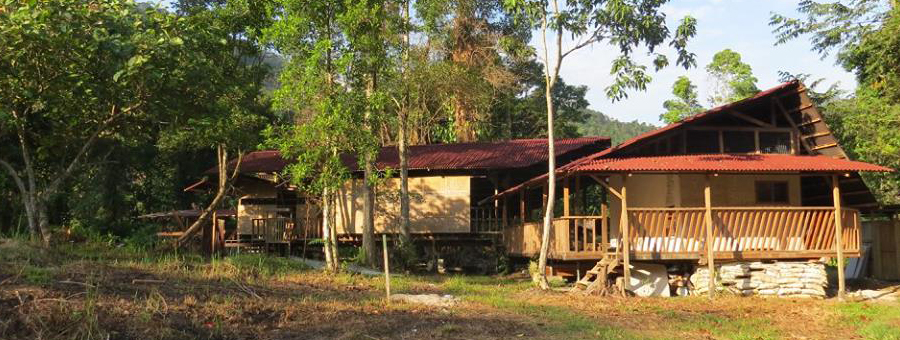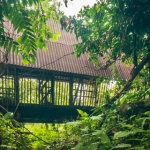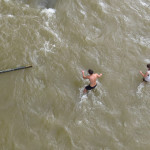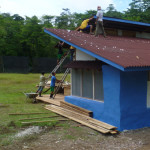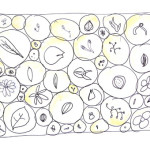7 Lessons in (design/build) Architecture
By Thomas Henderson-Schwartz
It has now been over a year since I first embarked upon the Design and Build of the bio-cultural heritage centre with the team Lewis and I had formed from Edinburgh University and Filzah. I spent a total of 8 months living in Kampung Buayan, which changed my outlook on not only architecture and design, but my life. I put together a talk, reflecting on my time in Buayan and the things I learnt about the design build process, which can be found on Youtube
Here is a summary of the “7 Lessons Learned” that I used to organise the lecture.
Lesson 1: Leave your ego at the airport
Working in a team is hard. Working in a team of design students, all with their own ideas, motivations, experiences and egos is really, really hard. When coming up with an idea for a project and then presenting it to the team you need to try your best to distance yourself from what was your initial idea. Once that sketch concept has been explained and everyone gets it then you have finished that role. Your next role is now to make connections between all the contributions from the team and see which ideas work well together and which combination will form the best whole. Maybe something you initially proposed will make it through, but maybe not as you first imagined it. Or maybe nothing you first proposed got into the design but you saw a connection between a couple of other things that were proposed and improved them by combining them. This is still design!! Make sure your individual contribution is about negotiating the whole rather than forcing a tacking on of “your idea”.
Lesson 2: Builders are smarter than those dumb architects!!!
In the lecture I relate this specifically to looking at what local builders have done in terms of things like jointing and dimensions of things. In the Buayan project the initial design failed to address the strong driving rain that exists in the rainforest. The overhangs were not sufficient to keep the heavy rain out. Had we looked more carefully at the local buildings we would have quickly noticed how large the overhangs were and could have avoided this mistake.
Lesson 3: Nature is stronger than those weak architects!!!
This is about looking after your materials. Particularly in the context of the rainforest things have a tendency to rot and really fast. Make sure you look after your materials and take into account the sequence of assembly. How long will it take to get a roof over those exposed trusses? Could we build things in stages so that we can treat materials on a rolling basis etc… In Buayan we had a lot of wood in the system which has since needed to be strengthened or replaced.
Lesson 4: Money doesn’t grow on trees, but it might on bamboo….
Money on design and build projects is generally tight! They often end up being design and build projects to offset the cost of hiring professional labour. First of all be aware how much money you have and how much things cost. You will be surprised by how quickly budgets spiral out of control with simple things like paying for transport of materials to site (for the Buayan project I estimate this accounted for at least 20% of the total construction cost!). However we managed to start to re-coup some of this overspend by setting up the Build-cation programme, providing skills workshops (such as bamboo furniture making) to interested people, run by the local villagers. Not only did this have the benefit of bringing money in for the project but it also started to engage with the projects primary purpose of promoting the cultural heritage and biodiversity of the region.
Lesson 5: Mixing Child Labour, Alcohol and Construction is not always bad?
Community participation is a long term investment of time and effort. Trying to get help on site was probably one of the most challenging aspects of my time in Buayan. Instead of trying to do everything by yourself for a day with no help, go find some of the local guys and have a drink with them. By becoming their friends and a part of the community, you will find that people are much more likely to come and help you out the next day.
Health and safety on site is also a massive head-ache for the western design-builder; used to helmets and barriers and not having kids running around barefoot or having drunken teenagers as labourers. There is no easy answer but if you are in charge: find your own line of acceptable risk. I made a rule, for example, that if you were drunk you weren’t allowed to work on the roof (the job which for some reason unknown to me seemed to hold the most glory or just general fun). Getting the young kids involved with simple tasks such as collecting stones or picking up rubbish I also hoped would give them a greater sense of pride in the building and encourage them to look after it for years to come.
Lesson 6: Mistakes are ok (scratch that) – important!!
If it is your first design-build project then making mistakes is going to be expected. If it is your tenth design-build project then mistakes are still be expected. It is because we are human, and because circumstances change and because (particularly in the jungle environment) you can’t control everything. One major mistake we made when designing the bio-cultural heritage centre was not considering the bracing. All our walls were off the structural grid making it very difficult to brace the building without destroying the internal layout. We came up with a solution which was to create diamond shaped fixes on the intersection between the posts and beams. These will later be clad in bamboo panels representing the villages of the region. The point here is not that despite coming up with quite a poetic solution we were right not to consider the bracing earlier, but that all mistakes are solvable and that in finding solutions you are actually learning.
Lesson 7: Real architects cry
My final point relates to a soppy story which I go into a bit more detail in the lecture. Basically architects should not only understand their clients but also care for them. In doing so I believe better architecture results and the process of designing and constructing become a part of the building and creates a narrative from which the end users can start to add to with their occupation. All in all my time in Buayan was an unforgettable experience and I feel I’ve left a little piece of me behind….

